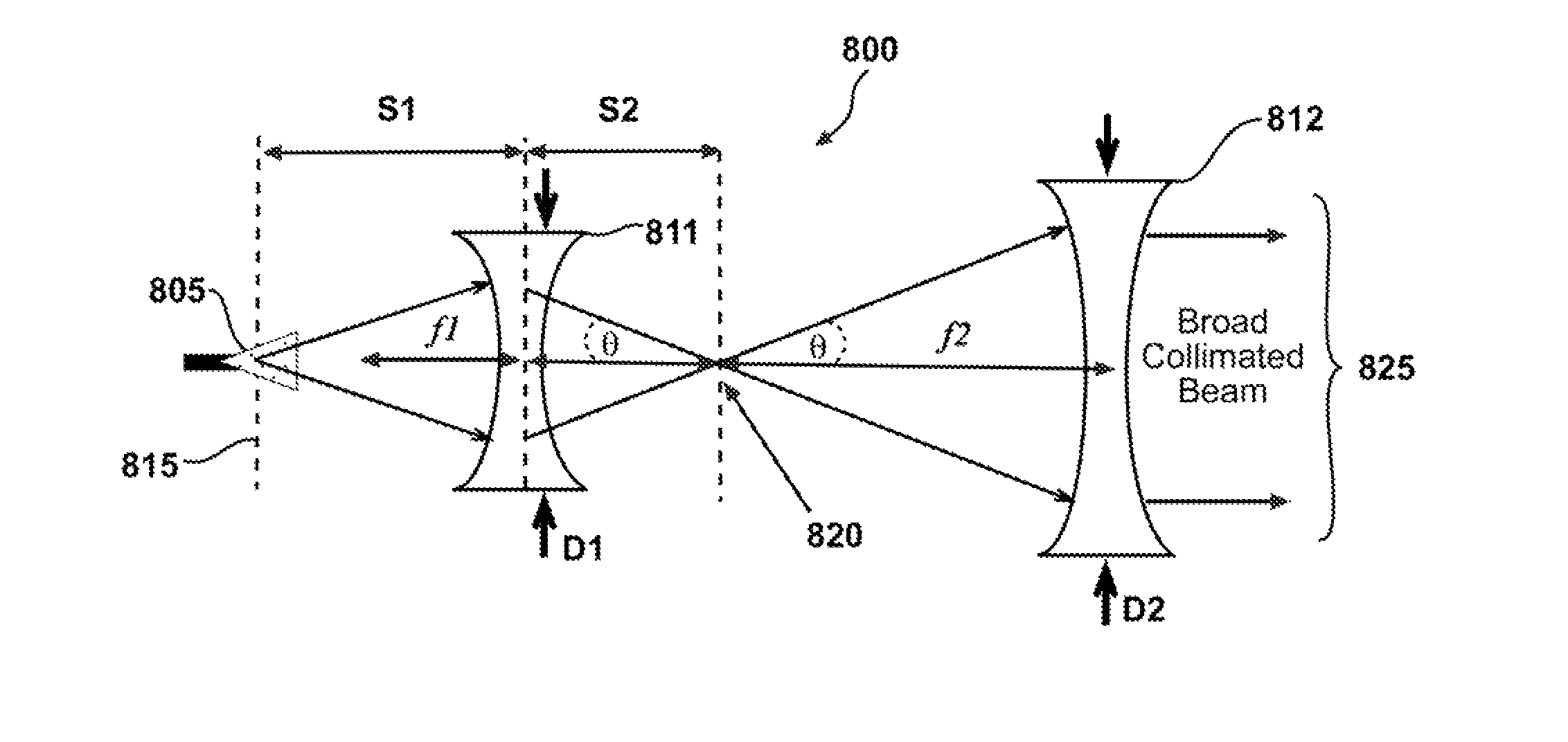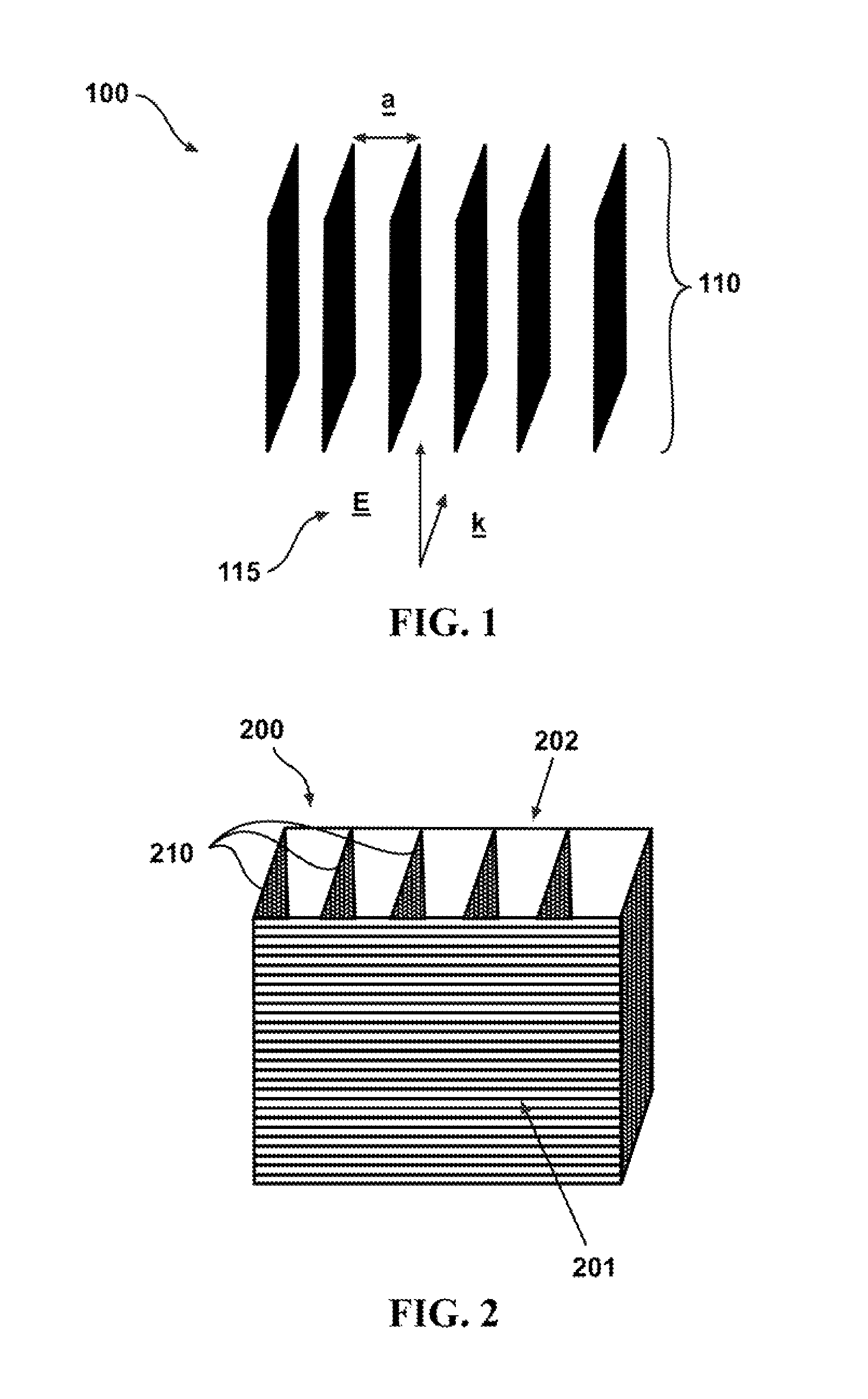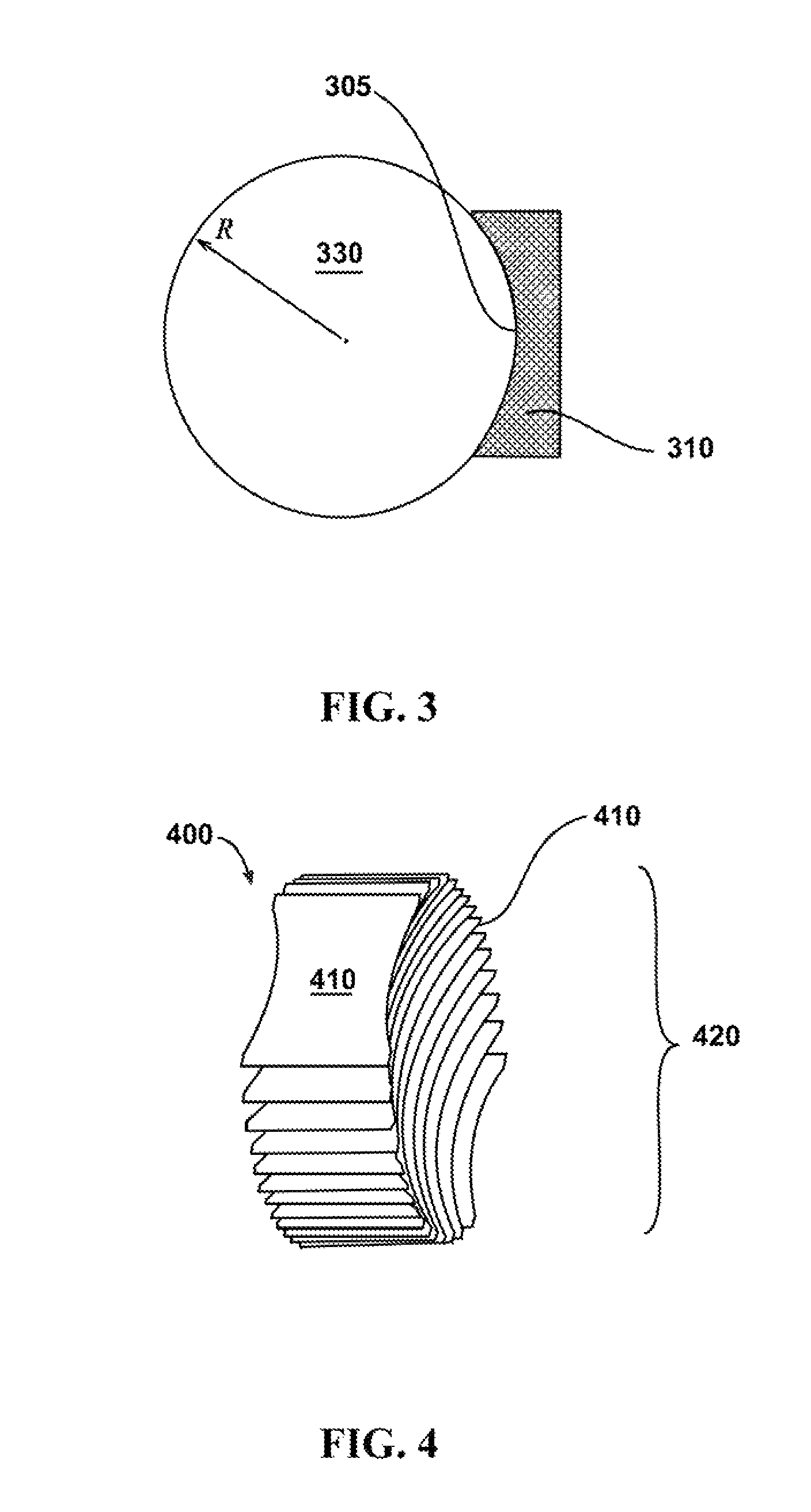Microwave zoom antenna using metal plate lenses
a technology of metal plate lenses and micro-waves, applied in the direction of antennas, waveguide horns, electrical equipment, etc., can solve the problems of limited range, inability to vary the diameter of the pencil beam, and low accuracy in determining the position of targets, etc., and achieve the effect of high precision
- Summary
- Abstract
- Description
- Claims
- Application Information
AI Technical Summary
Benefits of technology
Problems solved by technology
Method used
Image
Examples
Embodiment Construction
[0024]An objective of the present invention is to guide and control the energy radiated from a narrowband microwave source into a collimated microwave beam. The diameter of the collimated microwave beam can be varied as desired, to thereby control the area being illuminated at large distances. The present invention includes a pyramidal horn antenna and two specially designed parallel plate spherical waveguide lenses that together provide a novel way to transform energy generated by a high power microwave source into a collimated microwave beam. Collimation of the narrowband microwave energy is achieved by proper design and placement of the lenses. The diameter of the collimated microwave beam is controlled by translating these lenses relative to the phase center of a pyramidal horn antenna and relative to each other along the boresight axis of the horn antenna, with the optical axes of the lenses lying along the boresight. The entire antenna system can also be rotated in the azimuth...
PUM
 Login to View More
Login to View More Abstract
Description
Claims
Application Information
 Login to View More
Login to View More - R&D
- Intellectual Property
- Life Sciences
- Materials
- Tech Scout
- Unparalleled Data Quality
- Higher Quality Content
- 60% Fewer Hallucinations
Browse by: Latest US Patents, China's latest patents, Technical Efficacy Thesaurus, Application Domain, Technology Topic, Popular Technical Reports.
© 2025 PatSnap. All rights reserved.Legal|Privacy policy|Modern Slavery Act Transparency Statement|Sitemap|About US| Contact US: help@patsnap.com



